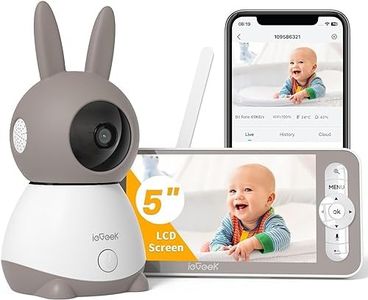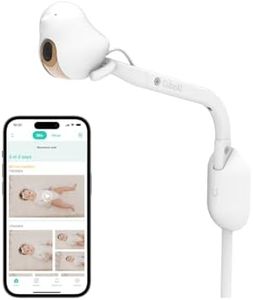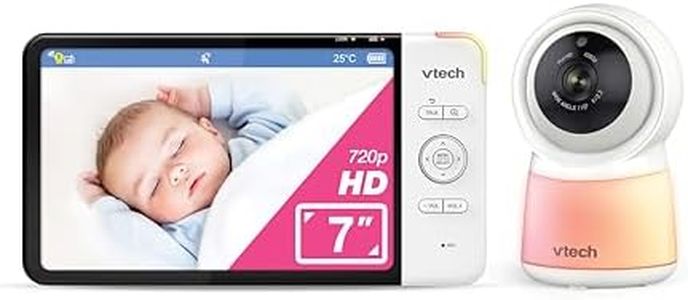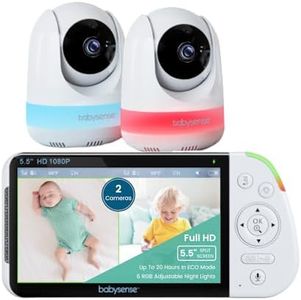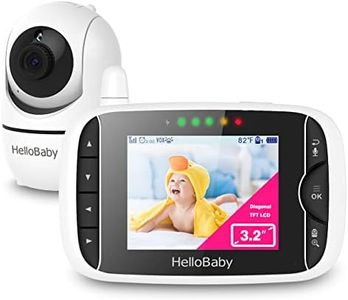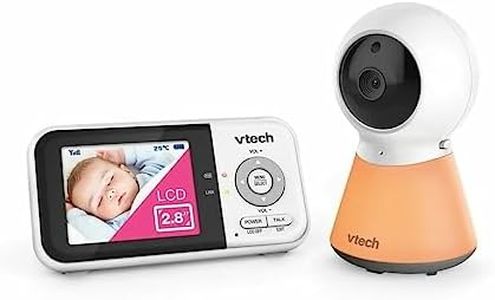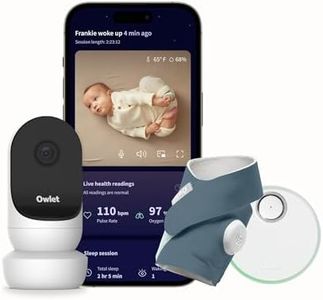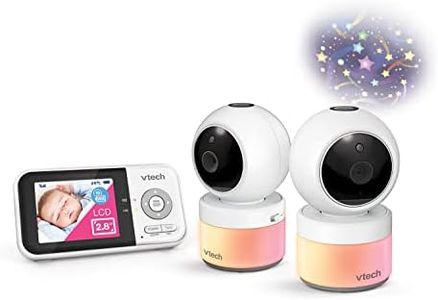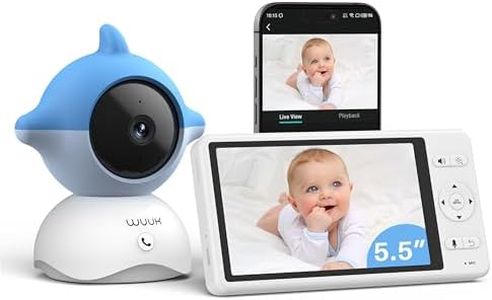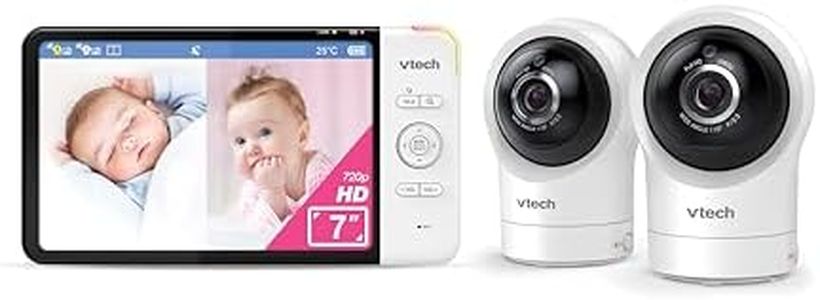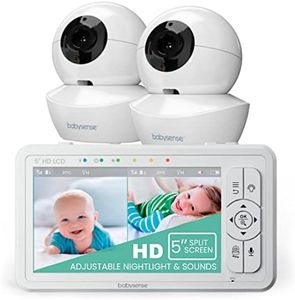We Use CookiesWe use cookies to enhance the security, performance,
functionality and for analytical and promotional activities. By continuing to browse this site you
are agreeing to our privacy policy
10 Best Long Range Baby Monitors
From leading brands and best sellers available on the web.Buying Guide for the Best Long Range Baby Monitors
Choosing a long-range baby monitor can have a big impact on your peace of mind. The main goal is to stay connected with your baby from anywhere in your home—or even in your backyard or garage—without losing signal or clarity. To pick the best baby monitor for your needs, it’s important to think about where you’ll use it most, the size of your living space, what features are most valuable to you, and your comfort with technology. Carefully looking at a few key specifications will help you find a monitor that offers the right performance and convenience for your family.RangeThe range tells you how far apart the parent unit and the baby unit can be before the connection drops. This is especially important if you have a large house, a home with thick walls, or want to use the monitor outside. Some monitors are designed for small apartments and have a short range, typically up to 300 feet, while others are suitable for larger homes and can cover 600 to 1,000 feet or more. A few even offer connectivity for up to 2,000 feet in open spaces. If you’ll mostly be in the same room or a neighboring space, a shorter range is fine. If you want freedom to move about your house, yard, or multiple floors, look for a monitor with the highest range you can find—just remember real-world obstacles like walls can lower the advertised range.
Audio vs. VideoSome monitors offer only audio, while others provide both audio and video. Audio monitors tell you when your baby makes noise and are generally simpler and longer-lasting on a charge. Video monitors let you see what’s happening but consume more power and might require more setup. Your choice depends on whether you feel reassured by watching your baby or if hearing them is enough for you. If you use the monitor mostly at night, a video model with good night vision might make sense. For travel or quick check-ins, audio-only could be less hassle.
Battery LifeBattery life refers to how long the monitor functions before needing a recharge or new batteries. Some units work only when plugged in, while others can run several hours on battery power. If you want to carry the parent unit as you move around, longer battery life gives you more freedom and less worry about recharging. For overnight use or frequent napping, look for monitors that last all night without interruptions.
Signal Type: Analog vs. DigitalAnalog monitors transmit signals over basic radio frequencies, while digital models use more secure technology that’s less likely to pick up interference or let others listen in. Digital monitors are preferred for privacy and clearer sound or video, but may be slightly more complex to set up. If signal interference or privacy is a concern for you, a digital monitor is the safest choice. Analog may be an option for simple, no-frills use where interference is unlikely.
Two-way TalkTwo-way talk allows you to speak back to your baby through the monitor. This can be helpful for calming your child without going into the room, or gently reassuring them you’re on your way. If you like the idea of soothing your baby with your voice or checking in with a caregiver, choose a monitor with this feature. If you only need to listen, you might not need it.
Night VisionNight vision lets the video camera work in low light or darkness, providing a clear image of your baby at night. This is important if you want to check on your baby after dark without disturbing their sleep or turning on lights. If you plan to use the monitor mostly during the day, this might not matter, but for overnight peace of mind, a model with strong night vision is a good pick.
PortabilityPortability refers to how easy it is to move the parent and baby units. Some monitors are lightweight and battery-powered, making them easy to clip onto your clothes or carry from room to room. Others are larger or need to be plugged in and may be better in a more permanent setup. Think about how much you need to move the monitor around and pick one that suits your daily routine.
